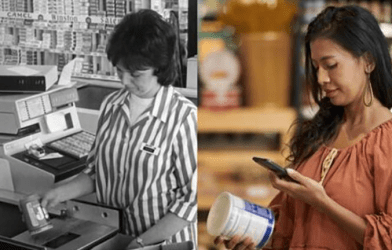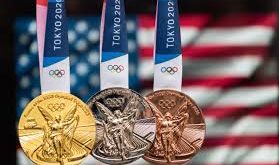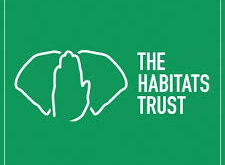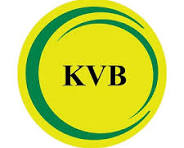- 50 years after the barcode was first scanned, 21 leaders from the world’s biggest companies sign a global joint statement calling for the transition to QR Codes with GS1 standards to revolutionise the consumer experience
- Signatories include industry champions like Alibaba.com, Carrefour, IGA, JD.com, JM Smucker, Lidl, L’Oreal, Nestlé, P&G, and Savencia
- The Sunrise 2027 initiative aims to have QR Codes with GS1 standards widely adopted by retailers and manufacturers globally by the end of 2027
 India, 26th June, 2024 – On the 50th anniversary of the barcode being scanned for the first time, 21 industry champions – including marketplaces such as Alibaba.com, retailers like Carrefour and brand owners like Procter & Gamble, are calling for the global adoption of QR Codes with GS1 standards. Powered by GS1, the leading standards organization behind the barcode, these QR Codes can give access to a wealth of product information easily accessible via smartphones – which is expected to completely revolutionize the consumer experience.
India, 26th June, 2024 – On the 50th anniversary of the barcode being scanned for the first time, 21 industry champions – including marketplaces such as Alibaba.com, retailers like Carrefour and brand owners like Procter & Gamble, are calling for the global adoption of QR Codes with GS1 standards. Powered by GS1, the leading standards organization behind the barcode, these QR Codes can give access to a wealth of product information easily accessible via smartphones – which is expected to completely revolutionize the consumer experience.
Since the first scan in 1974, the collaboration between retailers and manufacturers through GS1 has led to the widespread adoption of the original barcode. Today, this technology is the trusted universal method for product identification, with over 1 billion items carrying barcodes that are scanned more than 10 billion times daily, enhancing supply chain efficiencies worldwide. Today, global industry leaders are again uniting in the transition to QR Codes with GS1 standards, a 2D barcode also known as QR Codes powered by GS1.
“The first barcode scan forever changed how we buy and sell products,” says Renaud de Barbuat, President and CEO of GS1. “Fifty years on, industry champions have come together calling for the transition to QR Codes powered by GS1. This collaborative effort is set to transform in new ways how we shop, eat, and live. We believe this marks the start of a second barcode revolution – making products more traceable and transforming the consumer experience, thereby unlocking the future of retail.”
Revolutionizing the consumer experience
Unlike traditional barcodes, QR Codes powered by GS1 can connect consumers to extensive amounts of product information to elevate their experience – including usage and recycling instructions, safety, nutritional information, and industry certifications. With information easily accessible via smartphones, this opens a range of new possibilities for consumers, manufacturers, and retailers alike – giving access to all the information consumers need and desire, improving traceability, and driving efficiencies through the supply chain, while still enabling scanning at checkout.
- Smarter choices: with information no longer limited by packaging space, QR Codes powered by GS1 can enhance the consumer experience by allowing brands to share additional information including video tutorials, style advice, suggested recipes or other information relevant to their purchase.
- Sustainable insights: with increasing consumer demand to understand the environmental impacts of products, QR Codes powered by GS1 can connect consumers to information such as where a product was sourced, its components, carbon footprint, and guidance on recycling or reusing packaging.
- Safer food: alongside health and nutrition, QR Codes powered by GS1 can facilitate access to regulatory information, detailed allergy advice, and ‘Best Before’ or ‘Sell By’ dates – allowing expired foods to be rejected at checkout, and those close to expiry to be sold at reduced rates – leading to a reduction in food waste.
Companies will need to evaluate their internal technology and processes to make the most of QR Codes with GS1 standards. Adding more detailed product information into QR Codes can be done gradually, allowing businesses to plan changes at their own pace.
“Consumers demand more information about the products they’re purchasing, regulators require the disclosure of more information and there’s an ongoing need to more effectively track and trace products through the supply chain”, said Jon R. Moeller, Chairman of the Board, President and CEO, The Procter & Gamble Company. “We can resolve this with 2D barcodes with GS1 standards inside – a single barcode that has the power to provide all the information consumers need and desire, improve traceability through the supply chain, and scans at checkout.”
Sunrise 2027
Sunrise 2027 is a groundbreaking, collaborative effort to advance global standards for efficiency, safety, and sustainability across the retail and consumer goods industries. The companies who have joined forces with GS1 are a combination of leading brand owners, retailers and marketplaces that have a combined market value of over $1.4 trillion USD. These companies operate in over 150 countries and reach billions of consumers worldwide – paving the way for the project’s success.
The goal of this collaboration is that by the end of 2027 QR Codes with GS1 standards should be widely adopted. To achieve this, a coordinated effort is necessary between manufacturers and retailers: manufacturers should start implementing QR Codes with GS1 standards on product packages, while retailers should ensure their point of sale (POS) scanners are equipped to read the new barcodes.
“We expect that the transition to QR Codes with GS1 standards will happen gradually around the world, but one thing is certain: those that accelerate through this transformation the fastest will be best positioned to unlock valuable new capabilities and provide more benefits to their customers, shoppers, and consumers,” said Mark Batenic, Chairman, Independent Grocers Alliance (IGA) and Chairman of the GS1 Management Board.
The shift has already begun with the new technology being tested in 48 countries across the world, representing 88% of the world’s GDP.
The complete list of companies that have signed the global joint statement is the following: 7-Eleven (CP ALL Thailand), Alibaba.com (Taobao & Tmall Group) , AS Watson, Barilla Group, Carrefour, Dr. Oetker, IGA, JD.com Group, Lidl International, L’Oréal, Master Kong (Tingyi Holding Corp.), Mengniu Group, Metro, Migros Ticaret A.S., Nestlé, The Procter & Gamble Company, Savencia Fromage & Dairy, The J.M. Smucker Co., Tsingtao Beer Ltd., WH Group (Henan Shuanghui Development Co.), and Yili Group.
You can access the global joint industry statement here.
There are several types of next generation 2D barcodes. The QR Code is the most widely used in retail, while the GS1 DataMatrix is commonly used in healthcare. To learn more about QR Codes powered by GS1’s, please visit this page.
 Newspatrolling.com News cum Content Syndication Portal Online
Newspatrolling.com News cum Content Syndication Portal Online







